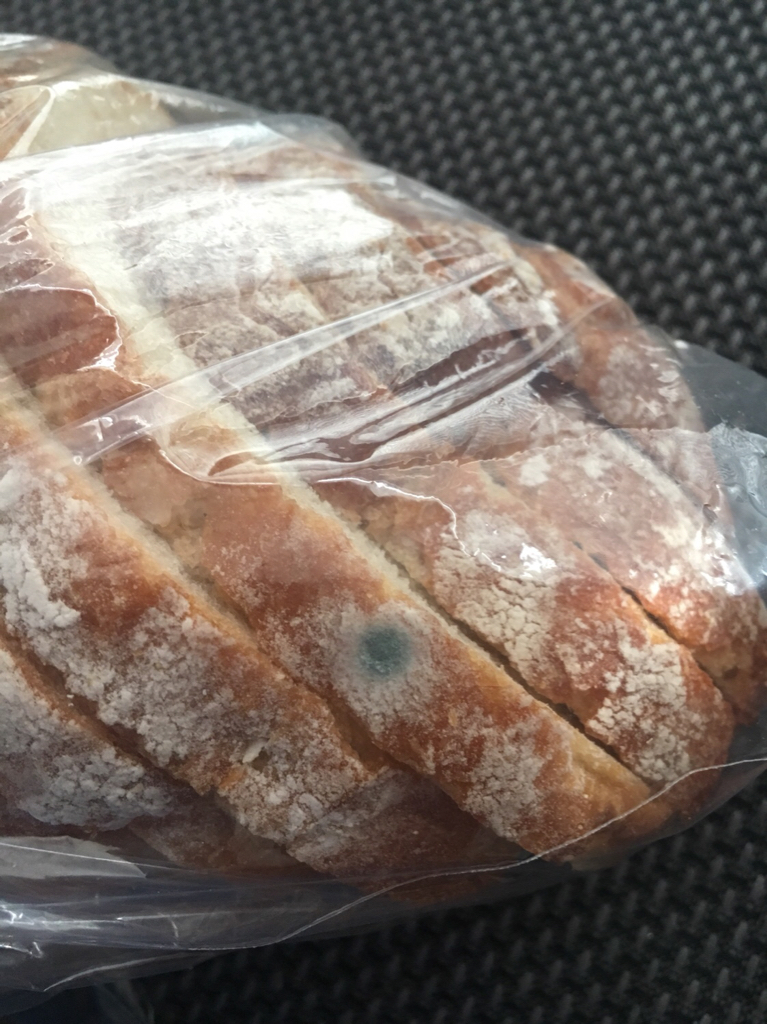If it's rye bread, then it's theoretically possible, but exceedingly unlikely. If it's not rye bread, then I think it's safe to say that it's so unlikely as to be a statistical impossibility. The mold that forms on most bread (and that most commonly forms on even rye bread) is penicillium, from which penicillin is made. Rye bread, on the other hand, has a very small chance of containing ergot fungus.
Ergot is a fungus that affects various grains, but most often rye, while it's still in the field. It contains several hallucinogenic alkaloids. One of them, ergotamine, is a precursor to lysergic acid, which in turn is a component of Lysergic acid diethylamide, or LSD. In fact, Albert Hoffman whipped up his first batches of LSD from ergotamine. It's considered the most potent of the hallucinogens in ergot fungus.
It's possible in theory for ergotamine from infected grain to make it all the way to a loaf of rye bread. But it's exceedingly unlikely given modern farming, milling, and baking practices. Even if a sufficient quantity existed in finished bread to cause hallucinations, the absorption and bioavailabity of ingested ergotamine are fairly poor due to the acidity of the gastric juices. (That's why therapeutic ergotamine is usually given as a sublingual tablet or a suppository.)
The most likely result of ingesting a small amount of naturally-occurring ergotamine is nausea, and probably not even that. Larger amounts can cause gangrene (which actually results from a combination of the ergotamine and another alkaloid in ergot, whose name I don't remember offhand, causing severe vasoconstriction), or convulsions. If you were really unlucky, it could even kill you.
If you did defy the odds and managed to ingest enough ergotamine from rye bread to cause hallucinations, but not enough to kill you or cause your fingers and toes to rot away and fall off, the hallucinations would not be happy ones. For reasons not completely understood, ergotamine hallucinations are always unpleasant. The hallucinations caused by other hallucinogens such as LSD, psilocybin ("magic mushrooms"), mescaline (peyote) and scopolamine ("jimsonweed") tend to be more reflective of the person's state of mind when they take the drug. Ergotamine trips, on the other hand, are always bad.
Rich





